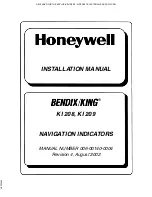
SAFETY, INSTALLATION AND OPERATION MANUAL
AVANCIS POWERMAX
®
PHOTOVOLTAIC MODULES
Fire Safety
• Follow the local guidelines, codes and
requirements for fire safety.
• The installation of a PV system on a
build ing may affect fire safety of the
building.
• For roof application, the PV system
must be mounted over a fire-resistant
roof covering rated for the application
(outside USA and Canada).
• Do not install or use PowerMax
®
mod-
ules near hazardous locations where
flam mable gases or vapors can be gen-
erated or collected.
• PowerMax
®
modules mounted on build -
ings will continue to produce hazardous
DC voltage in case of a fire, even in the
following cases:
• low-light intensity
• disconnected line between PV mod-
ules and inverter
• partly or entirely damaged modules
• damaged DC cabling
• Stay away from the PV sytem during
and after a fire.
• Inform the fire fighters about the par-
ticular hazards from the PV system.
• After the fire, have your installer bring the
PV system in a safe mode (if possible).
Mechanical Installation
• Depending on the installation, appro-
priate measures should be taken to pre-
vent any water, dirt or other substances
from accumulating on the module.
• Landscape and portrait mounting of the
modules in different directions is allowed.
All modules should be mounted in one
direction to achieve a unique appealing
surface. This means that the module la-
bels on the backsides are pointing to the
same side. Keep the tilt angle of the
modules between 0° and 40° against the
horizontal when mounting the modules
in landscape orientation (does not apply
to free-field installations).
• PowerMax
®
modules must be securely
fastened to a mounting structure which
follows the local building law regula-
tions and which is suitable for PV appli-
cations and the local maximum wind
and snow loads. Follow the instructions
of the respective supplier.
• Ensure that PowerMax
®
modules are
not subjected to wind or snow loads in
excess of the maximum permissible
loads as specified on the applicable
PowerMax
®
Product Information litera-
ture.
• Ensure that PowerMax® modules are
not subjected to excessive forces due to
thermal expansion of the support
structure.
• During installation and operation, the
support structure must not cause exces-
sive bending or twisting of the Power-
Max
®
module. All four mounting points
must be within the same plane. To min-
imize mechanical stress on the mod-
ules, the maximum deviation of each of
the four mounting points from the
plane shall be less than 1 mm.
• Provide adequate rear ventilation under
a PowerMax
®
module for cooling and
dissipation of condensation or moisture.
• When mounted, clearance of a mini-
mum of 5 mm between PowerMax
®
modules is required to allow for thermal
expansion of the modules.
• With the exception of the back rails, all
other parts of the PowerMax
®
modules
must always be kept free from any
structural elements that can come into
contact with the module and cause
damage.
• Do not drill any additional holes in the
back rails. Doing so could compromise
the mechanical inte g rity of the Power-
Max
®
module and/or cause electrical
hazards or corrosion.
• AVANCIS requires that its PowerMax
®
modules are mounted using the four
mounting areas locat ed on the back rails.
• The modules' glass edges are sensitive
to impact. Avoid contact with other
modules, tools, etc.
Electrical Installation
• PV modules of different configurations
and different nominal power ratings
must not be used in the same PV array,
unless the inverters are specified for this.
• PowerMax
®
modules are factory-equipped
with electrical cables and connectors
for easy interconnection in series.
• Use identical LC4 connectors for
connec ting the PV modules. In case
connectors of different manufacturers
are to be paired, the connection should
be approved in writing by both manu-
facturers.
• User-supplied electrical cable extensions
might be required for connecting the
PowerMax
®
modules.
• Use applicable system wiring with
suitable cross-sectional areas and
connectors that are approved for the
maximum reverse current (I
r
) of the
PowerMax
®
module.
• Match the polarities of electrical cables
and terminals when making the con-
nections; failure to do so may result in
damage to the PowerMax
®
module.
• Make sure that the PV system has ap-
propiate lightning and over-voltage pro-
tection and follow any applicable regu-
lations (including those from insurance
companies).
• Ensure that all electrical connections are
secure and tight.
• A bypass-diode is integrated in one of
the two PowerMax
®
module junction
boxes. This diode is not user-replace-
able. The junction box must not be
opened.
• The maximum number of PowerMax
®
modules being connected in series must
be calculated in line with the applicable
regulations in such a way that the speci -
fied maximum system voltage (V
sys
) of
the PowerMax
®
module and all other
electrical DC components will not be
exceeded in open-circuit operation,
even at low temperatures. If there are n
modules, the following must apply:
n*U
oc
< U
sys
.
• Not more than two PowerMax
®
modules
or module strings should be connected
in parallel without using appropriate
string current protection (otherwise the
maximum I
r
specification may be ex-
ceeded and the module will be dam-
aged).
Underwriters Laboratory Information for
USA and Canada:
• Refer to section 690-8 of the National
Electric Code (NEC) for an additional
multiplying factor of 125 % which
may be applicable.
• Under normal conditions, PowerMax
®
modules are likely to experience con-
ditions that produce more current
and/or voltage than reported at Stan-
dard Test Conditions. Accordingly, the
values of I
sc
and V
oc
marked on this
module should be multiplied by a factor
of 1.25 resp. 1.10 when determining
component voltage ratings, conduc-
tor capacities, fuse sizes and size of
controls connected to the PV output.
14
©2016 | AVANCIS GmbH | Solarstrasse 3 | 04860 Torgau | Germany | [email protected] | www.avancis.de | May 2016










































